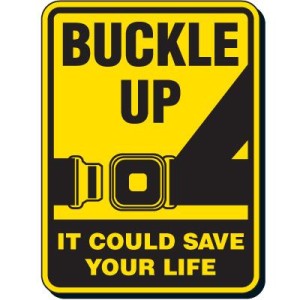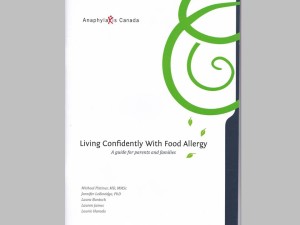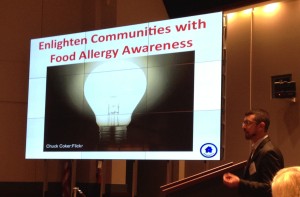Written by Michael Pistiner MD, MMSc
“Dad, I heard a crazy thing. I heard a kid died from her food allergy. Is that true?”
I recently discussed the subject of my own ten year old son’s mortality with him. He broached the subject with me. “Dad, I heard a crazy thing. I heard a kid died from her food allergy. Is that true?” I answered honestly. “Yes. and it is very, very rare. This is why we do what we do, and why we take good care of ourselves all the time, no matter what. We read labels, avoid allergens and have emergency medicine close by. This way, if there is a reaction we can take care of it quickly.” Thankfully, that response was all it took for him to appear a bit more comfortable, tell me that he understood, and move on to the next topic.
Thinking about our own mortality is overwhelming enough, but when it’s about our own kids, it is terrifying. Every time our food allergy community loses a life to anaphylaxis, I can’t help but imagine that worst case scenario in my own family. I try not to focus on the ‘what ifs’ but instead use those thoughts as internal motivation to further food allergy education to help prevent the unthinkable.
Recently, Umasunthar, Boyle and colleagues published a study in Clinical and Experimental Allergy, Incidence of fatal food anaphylaxis in people with food allergy: a systematic review and meta-analysis. The study estimated the risk of a child age 19 or lower from dying from a food allergic reaction over the course of a year as 3.25 in a million (1.81 in a million for all ages). For me, their findings convey the unlikelihood of a fatal anaphylactic reaction if appropriate management strategies are implemented, and provide me with some reassurance. To further frame this recent data and apply it to current unmet needs in food allergy education and advocacy, I’ll use a comparison that I’ve found to be very helpful; that of traffic safety.
“For me, their findings convey the unlikelihood of a fatal anaphylactic reaction if appropriate management strategies are implemented, and provide me with some reassurance.”
The Personal Perspective: Toyotas and Food Allergy
My family lives in a suburb. We are lucky enough to be able to have a car for each adult. I drive a sedan and my wife drives a minivan. They both have passed inspection, and have anti-lock brakes and airbags. For the most part, we drive the speed limit, practice defensive driving, and obey all traffic laws. We always wear our seat belts and we never text and drive. When my kids travel with us they are both in booster seats, sit in the rear and always wear their seat belts. When they are in the car, I drive even more carefully, especially as my back seat drivers reprimand us for any and all speed violations. We follow the rules to stay safe.
My son has food allergies. We are well versed on food allergy management strategies. We make sure that there is always someone that ensures that all food that he eats is safe for him, that there is always someone that can identify and treat an allergic reaction and anaphylaxis, and that auto-injectors are available at all times. We have created family rules that have re-enforced food allergy management strategies that we all follow, like turning our car around and getting forgotten auto-injectors, like never eating an item without being able to read a label, etc. We are vigilant and follow the rules to stay safe.
Driving and Dealing with Food Allergies 365 Days a Year
We use our cars almost every day. We travel thousands of miles a year. Seat belts click and engines turn over, dozens of times in a single day. Our automobiles help us keep pace with our busy lifestyles. We can visit friends and relatives and accomplish tasks and chores with ease. The convenience that cars bring us make them almost a necessity. We live our lives and enjoy the comforts afforded by this freedom.
For food allergy, we read dozens of labels every day, hundreds in a month, thousands a year. Auto-injectors in backpacks, pockets, and purses. We train dozens of caregivers, friends, relatives. We avoid, we teach, we prepare. Our children eat well over a thousand meals per year. They safely go to play-dates and parties. They participate in all sorts of activities. They live their lives and enjoy being kids.
The Unthinkable
Every once in a while we get stuck in bumper to bumper traffic on the highway. After what feels like forever, our cars pass the cause of the slow down: a mangled automobile surrounded by dozens of emergency vehicles. It is a frightening and too frequent reminder of the fact that motor vehicle accidents happen. We hear about deaths on the news, in our communities, and many of us have personally experienced a loss ourselves. These shaking moments remind us how lucky we are and how we must remember to follow traffic rules to stay safe. Additionally and importantly, we teach our children in developmentally appropriate ways to participate in their own safety.
Each time I hear of a food allergy related tragedy it feels like a blow to the gut. A healthy wonderful child with so much potential lost too soon. These tragedies remind us how lucky we are and that we must remember to follow the rules to stay safe. We must implement food allergy management strategies at all times and in all circumstances (e.g. read labels, avoid cross contact, communicate, have an emergency care plan, be prepared to recognize anaphylaxis and to treat with epinephrine, etc.). Additionally and importantly, we must teach our children age appropriate management skills, to participate in their own safety.
Traffic and Food Allergy Related Mortality Statistics
According to the National Highway Traffic Safety Administration (Traffic Safety Facts 2011 Data), of the 32,367 traffic fatalities in the United States in 2011, 1,140 of these were in children younger than 14 years of age, an average of about 3 children killed every day.
During 2011, of those children age 14 and under, 41% were unrestrained, meaning nearly half of all fatalities occurred in the absence of simple preventative measures. With the preventative measure of child safety seats alone, the NHTSA estimates a reduction in fatal injury by close to 70% in infants and 54 % for toddlers in passenger cars.
For food allergy, Dr. Boyle and colleagues estimated that the odds of dying from anaphylaxis in one year, for a person with a food allergy, is about 1.8 in a million and for a child age 19 or less, is about 3.3 in one million. If this rate is applied to the upper range of the recent food allergy statistics being used by FARE and others, 6 million US children, we can very roughly extrapolate that we can expect close to 20 deaths (twenty too many) a year in the United States in children (6million x 3.3/million/year). (6 million projection based on 8% Prevalence as per Dr. Ruchi Gupta and colleague’s study (J Pediatr.2011)).
When looking at registries of fatal and near fatal food allergic reactions, in 88% there was a delay or lack in the administration of epinephrine, meaning that most of these reactions lacked the appropriate emergency response. Research supports that delays in treatment of anaphylaxis increase the chance of mortality. Also the information conveyed by these registries reinforce the sheer importance of consistent food allergy management strategies including avoidance of allergen and emergency preparedness. (Bock SA, Muñoz-Furlong A, Sampson HA. Fatalities due to anaphylactic reactions to foods. J Allergy Clin Immunol 2001; 107:191.), (Bock SA, Muñoz-Furlong A, Sampson HA. Further fatalities caused by anaphylactic reactions to food, 2001-2006. J Allergy Clin Immunol 2007; 119:1016).
Traffic Safety and Food Allergy Education to Prevent the Unthinkable
National Highway Traffic Safety Administration estimate that in children under age 5 in passenger vehicles, restraint use (child safety seats or adult seat belts) saved close to 263 lives in 2011. They further estimate that between 1975 and 2011, 9,875 children under the age of 5 were saved by restraints.
 Education is key. Public awareness and support for educational initiatives are imperative and potentially life saving. Schools, communities, and healthcare providers routinely educate. We have laws created to keep us as safe as possible. As a young child, I remember travelling in the “way back” in friends’ station wagons unrestrained. Luckily, with awareness and education, seat belts and safety seats are the norm, while allowing children to be unrestrained is taboo.
Education is key. Public awareness and support for educational initiatives are imperative and potentially life saving. Schools, communities, and healthcare providers routinely educate. We have laws created to keep us as safe as possible. As a young child, I remember travelling in the “way back” in friends’ station wagons unrestrained. Luckily, with awareness and education, seat belts and safety seats are the norm, while allowing children to be unrestrained is taboo.
 Like traffic fatalities, we must do everything in our power to stop food allergy related deaths. It is difficult to figure out how many children with food allergy have been saved each year due to effective food allergy management strategies. Data from mandated reporting of epinephrine administrations in Massachusetts Schools suggest that epinephrine is administered over 200 times in a single year in Massachusetts schools. The data also has demonstrated that close to 25% of administrations of epinephrine are to those who do not have a history of a life threatening allergy that is known to the school. In 2001, after there were 3 food allergy related deaths in MA schools, a set of guidelines, The Guidelines for the Managing Life threatening Food Allergies in School were created and implemented. There hasn’t been a food allergy related death in a MA school since.
Like traffic fatalities, we must do everything in our power to stop food allergy related deaths. It is difficult to figure out how many children with food allergy have been saved each year due to effective food allergy management strategies. Data from mandated reporting of epinephrine administrations in Massachusetts Schools suggest that epinephrine is administered over 200 times in a single year in Massachusetts schools. The data also has demonstrated that close to 25% of administrations of epinephrine are to those who do not have a history of a life threatening allergy that is known to the school. In 2001, after there were 3 food allergy related deaths in MA schools, a set of guidelines, The Guidelines for the Managing Life threatening Food Allergies in School were created and implemented. There hasn’t been a food allergy related death in a MA school since.
 We need to empower and educate people with food allergies, their families and those responsible for their care. The importance of evidence based allergen avoidance, as well as the availability and timely treatment of anaphylaxis with epinephrine must be communicated and understood (see Living Confidently With Food Allergy for free handbook co-authored by author). Health care providers must be trained to deliver consistent teaching of effective food allergy management strategies at the very onset of the allergy. Those of us who are involved in food allergy education and advocacy must train the trainers and help foster communities of support. We must emphasize education, identification and management, as well as the establishment of policies and procedures that will support children with food allergy wherever they are and whoever they are with (see Food Allergy Mortality: The Elephant in the Exam Room).
We need to empower and educate people with food allergies, their families and those responsible for their care. The importance of evidence based allergen avoidance, as well as the availability and timely treatment of anaphylaxis with epinephrine must be communicated and understood (see Living Confidently With Food Allergy for free handbook co-authored by author). Health care providers must be trained to deliver consistent teaching of effective food allergy management strategies at the very onset of the allergy. Those of us who are involved in food allergy education and advocacy must train the trainers and help foster communities of support. We must emphasize education, identification and management, as well as the establishment of policies and procedures that will support children with food allergy wherever they are and whoever they are with (see Food Allergy Mortality: The Elephant in the Exam Room).
The 2011 traffic fatality rates in children 14 years and younger were a staggering 46% less when than compared to 2002 (Traffic Safety Facts 2011 Data). This is a vast improvement and clearly the result of efforts to educate and advocate.
Our community has seen great strides including the recent release of the CDC’s Voluntary Guidelines on Managing Food Allergies in Schools and Early Care and Education Programs and the passage of laws supporting the prompt treatment of anaphylaxis in our schools. Our smartest and best researchers continue to work on preventing allergies and finding treatments, while great efforts must continue to be put into education and advocacy.
We can all be inspired by improvements in traffic related deaths and continue in our collective mission to stop as many food allergy related deaths as possible.
Please stay in touch and follow us on Facebook and Twitter.
The views written in this piece are reflections by Dr. Pistiner individually and are not necessarily shared by the organizations that he volunteers for or is affiliated with.
 Michael Pistiner, MD, MMSc is a pediatric allergist for Harvard Vanguard Medical Associates, as well as a voluntary instructor of pediatrics at Boston Children’s Hospital. He is the father of a child with food allergies and serves as a voluntary consultant for the Massachusetts Department of Public Health, School Health Services. Dr. Pistiner is the author of Everyday Cool with Food Allergies, a co-author of Living Confidently with Food Allergy, and is co-founder and content creator of AllergyHome.org.
Michael Pistiner, MD, MMSc is a pediatric allergist for Harvard Vanguard Medical Associates, as well as a voluntary instructor of pediatrics at Boston Children’s Hospital. He is the father of a child with food allergies and serves as a voluntary consultant for the Massachusetts Department of Public Health, School Health Services. Dr. Pistiner is the author of Everyday Cool with Food Allergies, a co-author of Living Confidently with Food Allergy, and is co-founder and content creator of AllergyHome.org.
He is chair of the Medical Advisory Team for Kids with Food Allergies Foundation. Additionally, Dr. Pistiner is a member of the National Food Allergy Management and Education Advisory Board and serves on the board of Asthma & Allergy Foundation of America, New England Chapter.
He is a fellow in the American Academy of Pediatrics, where he is a member of the Council of School Health and the Section of Allergy & Immunology. He is also a member of the American Academy of Allergy Asthma & Immunology, where he is a member of the Adverse Reaction to Food Committee and Co-Chair of the Food Allergy Awareness in Eating Establishments Subcommittee.
LOVE your comparison to traffic safety! We are making a difference… all of us together help save lives. What an important mission. Thank you for all that you do!
Excellent blog post! I think this analogy will go a long way to helping people understand the need to implement common sense prevention strategies.